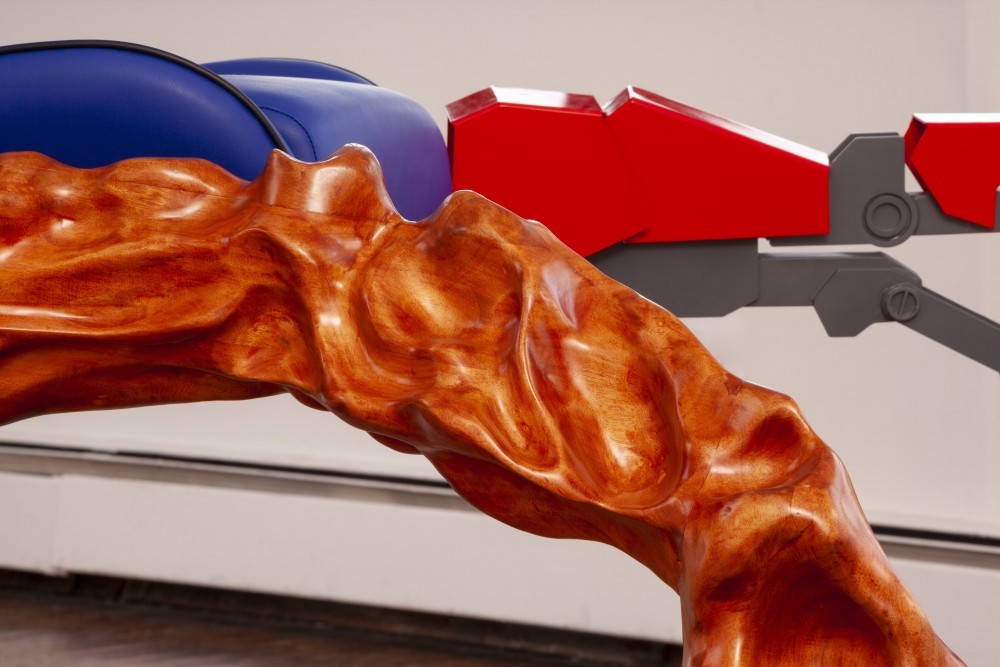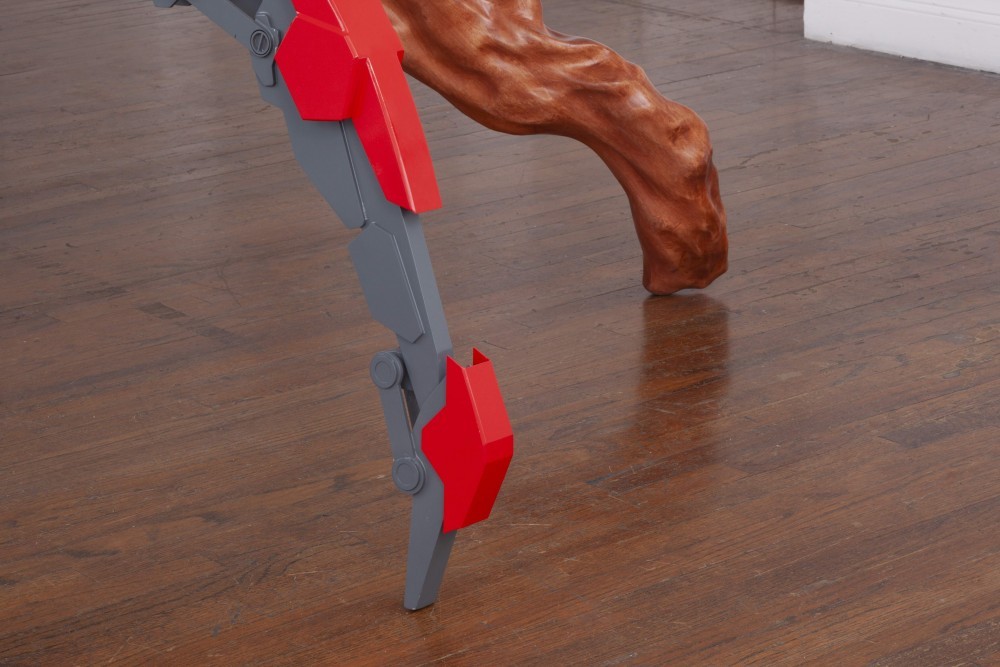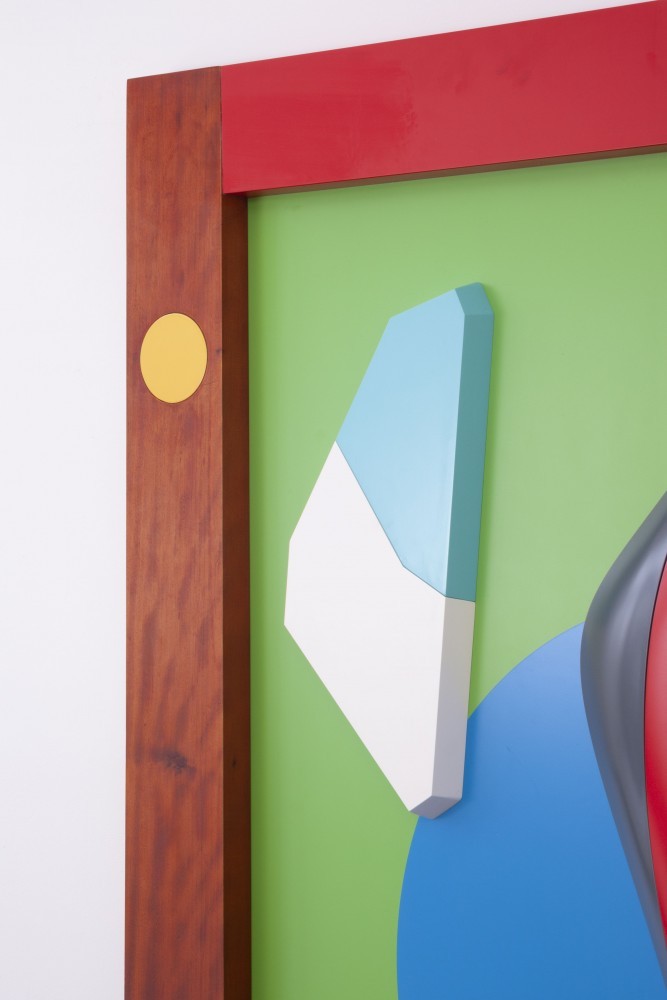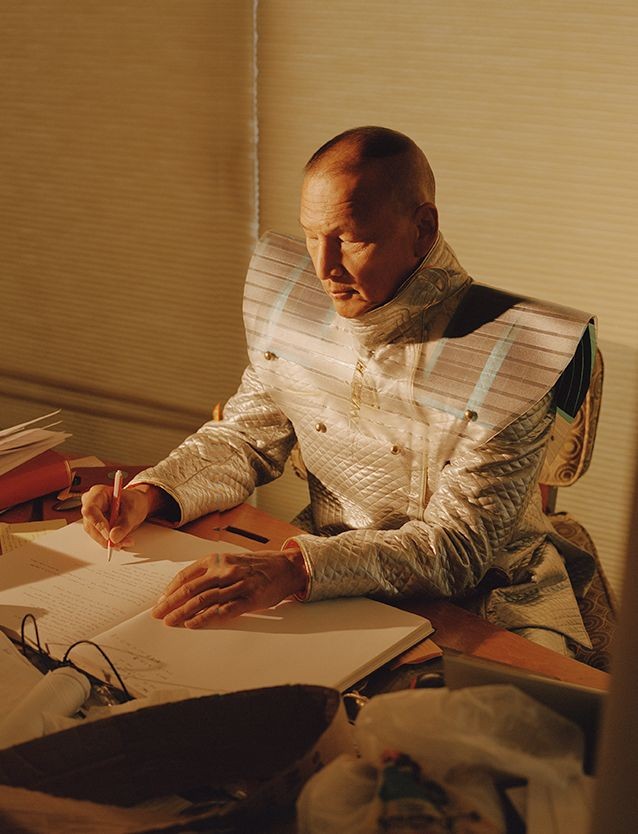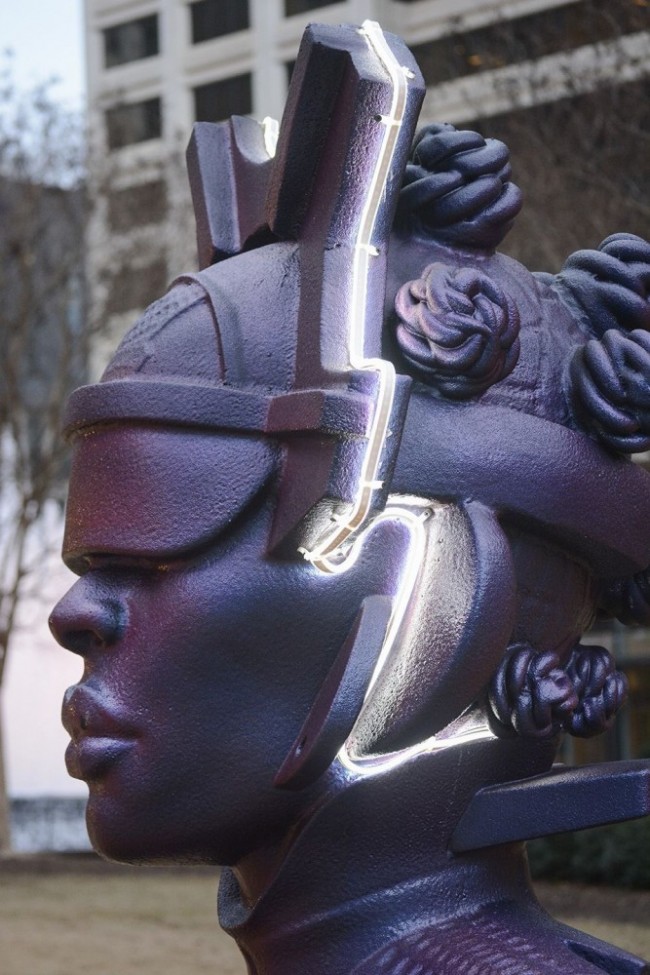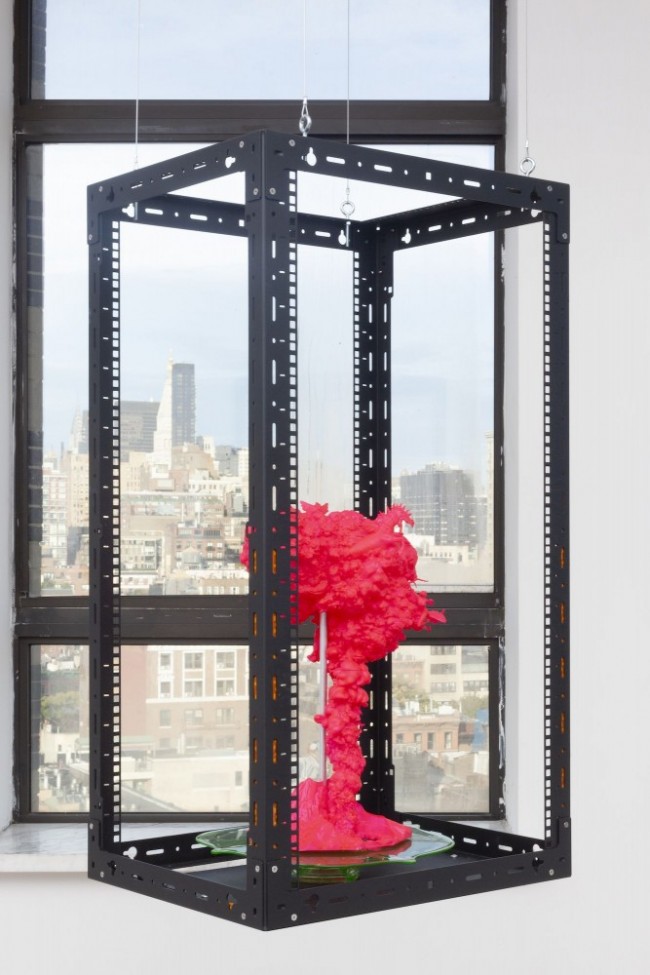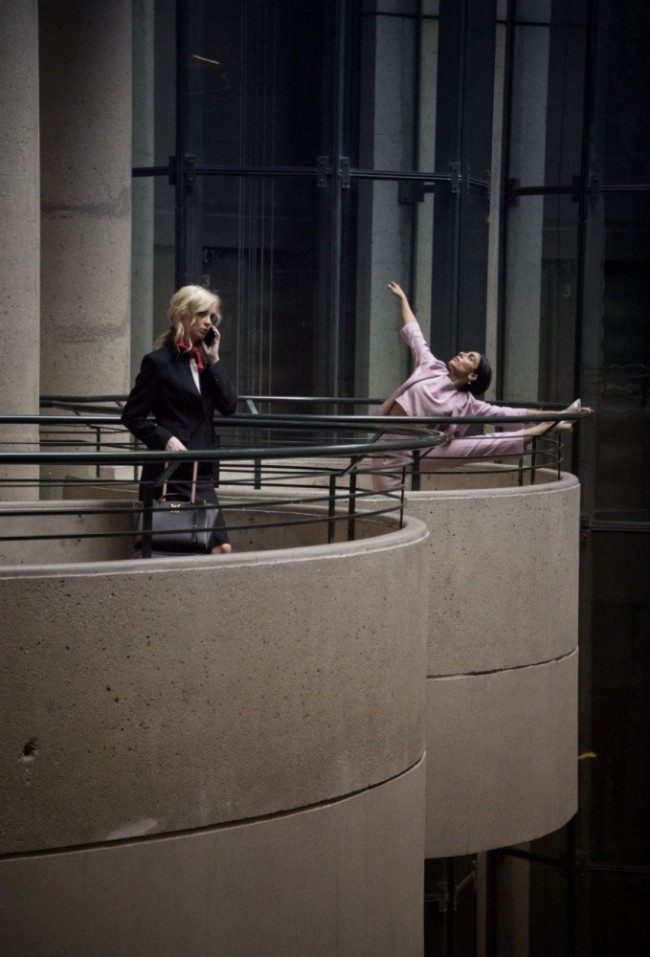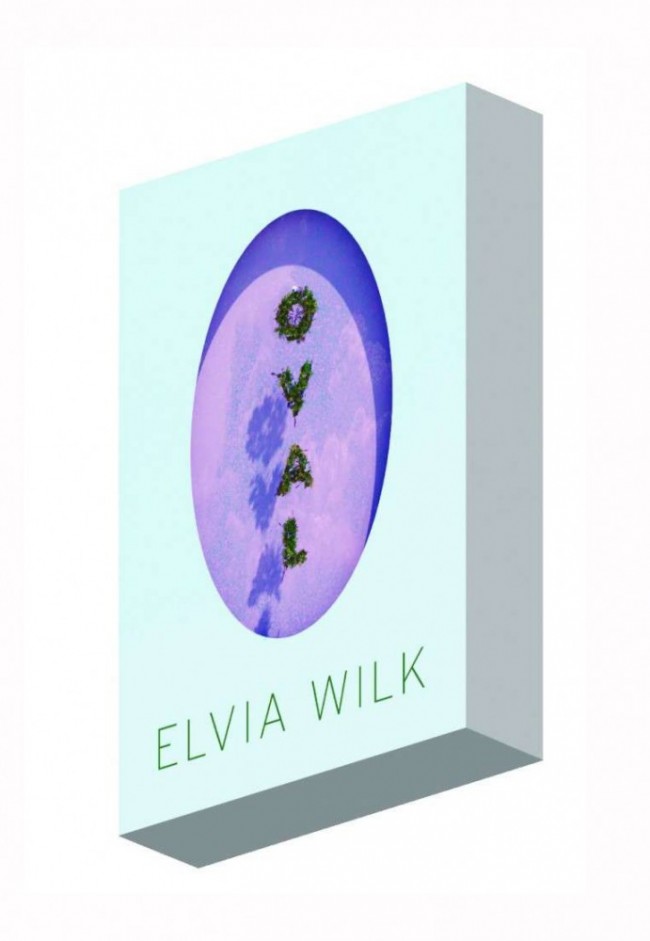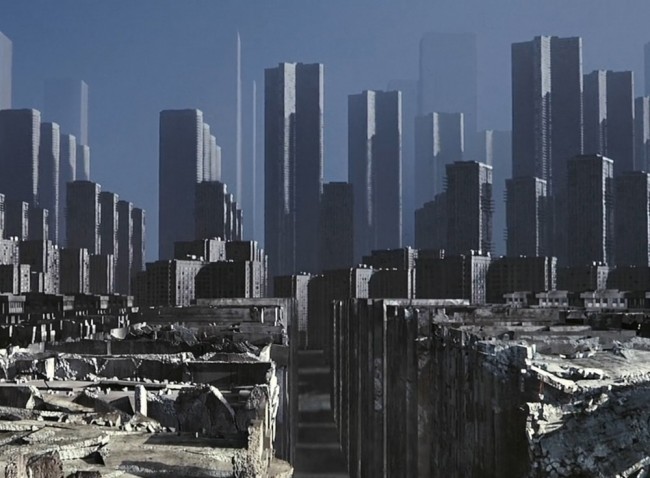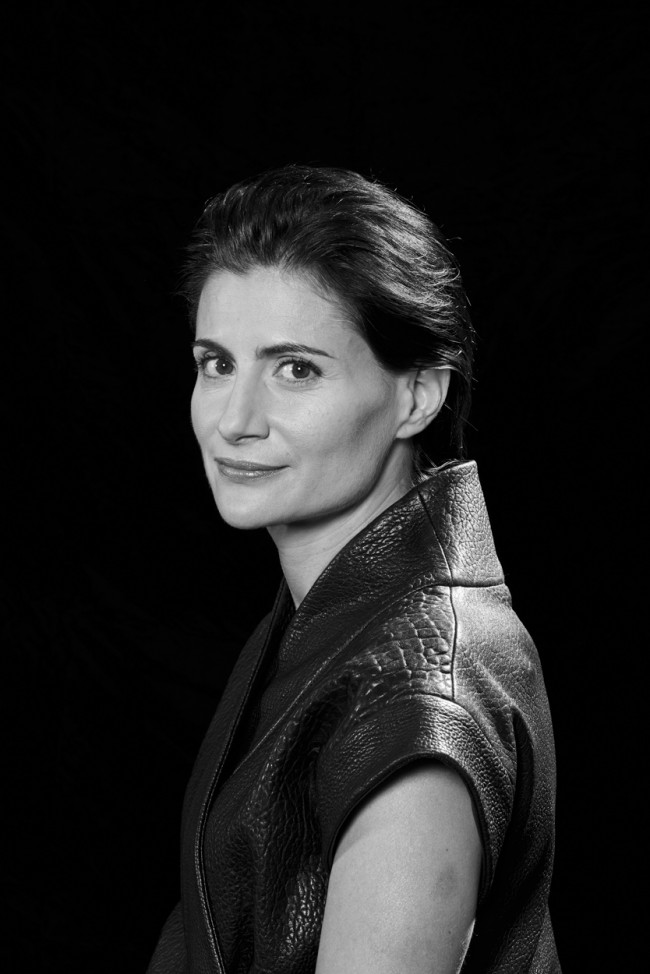ARTIST NIK KOSMAS EXPLORES THE AESTHETICS OF SCI-FI ARTISANAL FETISH
We are accustomed to a material hierarchy that prefers the natural, which is supplemented by the artificial when an insufficiency is judged (like prostheses). This idea fits within the operating guidelines of humanity as it stands at the cusp of a new decade, and is evidenced in everything from biomedicine to environmental engineering. This hierarchy’s ethos is that divinity, or evolutionary trial and error, is faultless, and we would be wise not to stray from its natural course. In this way we preserve a romanticism about the natural and allow the artificial to be synthetic, as opposed to antithetical. Nik Kosmas’s exhibition at Alyssa Davis Gallery is not interested in saving that romanticism. The works on view in Body Hunter: Monist Crysis set up an order in which mechanical creations are supplemented by bits of nature, not the other way around. They wear nature like cute accessories — as things that clue you into a superficial affinity for earthly things without subscribing to underlying zealotry.

Nik Kosmas, Bio-Mech Chair, (2019): Wood, steel, spray enamel, foam, synthetic leather, varnish. Courtesy Alyssa Davis Gallery
Body Hunter: Monist Crysis achieves intellectual density through sparsity of objects — there are only two works on view in the show. The first is Bio-Mech Chair, a throne-like entity that stands on four legs, commanding the 180-degree panorama afforded by the gallery’s flatiron typology. The seat is scavenged (from online marketplaces or auto scraps) and is supported by two pairs of legs. The legs give the chair a zoomorphic quality, removing it from the world of furnishings. On its left the chair is supported by two arachnid-like legs with a formal semblance to machinery from popular Japanese media franchises like Gundam or Zoids. The other pair of legs are made from wood using the methodology of root carving, a craft that emerged in China during the fifth century BCE through which the natural form of roots are exacerbated vis-à-vis a craftsperson’s sensitivity to the natural forces that gave rise to the root. Kosmas simulated that process with computer aided modeling and numerical control. The complimentary aesthetics of the seat and legs cast the wooden legs (the right two) as the prostheses in this arrangement, included as a kind of fetishized reference to nature rather than as an operative benefit. It’s like C-3PO covering himself with mud colored tree bark to decorate his chrome gold exterior.
The second work in the show, Soul Down Throat, is more two-dimensional, and again uses wood to accessorize otherwise synthetic materials. A combination of formica and plastic held together by a steel frame bordered on one side by a piece of cherry wood with a singular inset circle of yellow plastic, the piece was machine-manufactured in Shanghai, where Kosmas lives and works. The center of its frame is occupied by a blobby ideogram, 3D-printed in relief. Running vertically on its right border are the words “SOUL DOWN THROAT.” The juxtaposition of this text next to the biomorphic ciphers in the center of the frame suggests they could also be interpreted as a sort of signifier, perhaps in a language that’s legible to machines rather than humans.
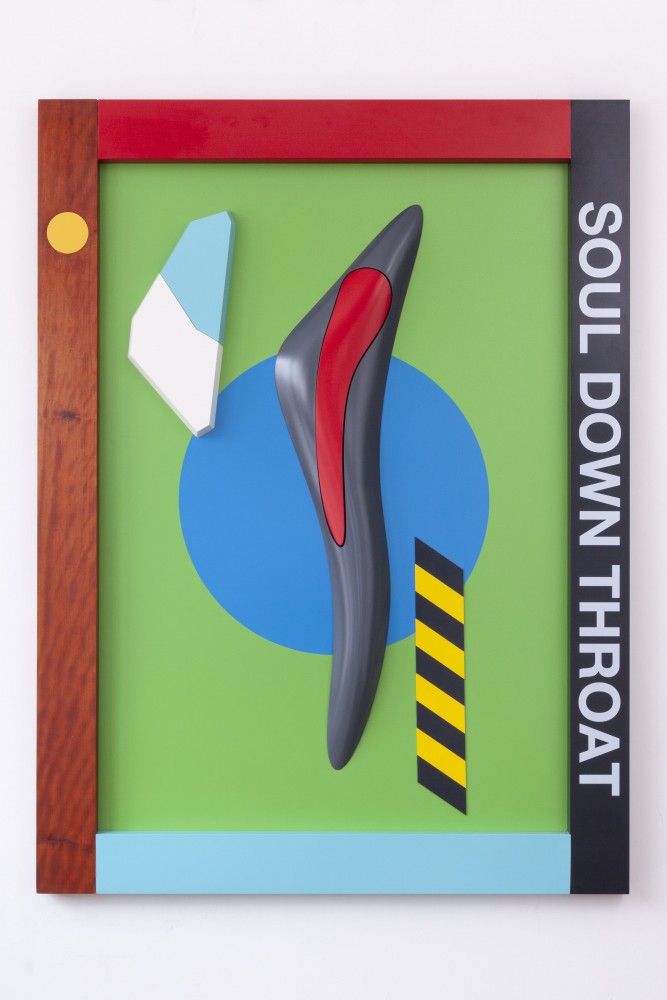
Nik Kosmas, Soul Down Throat (2019): Steel, spray enamel, ABS, wood, acrylic sheet. Courtesy Alyssa Davis Gallery
The poetic efficacy of the text in Soul Down Throat points to Kosmas’s writing practice, which runs parallel to his work as a sculptor. The title of the exhibition is drawn from an ongoing science fiction project titled bodyhunter that consists of a series of vignettes written from the point of view of an adventuring humanoid. In one of these passages they observe the continuity of natural phenomenon framed by decaying remains of human ingenuity:
watching the sunrise over the vibrating strings of my wind harvester
watching the sunrise over the decaying skeletons of downtown
watching the sunrise over the glistening bubble domes
watching the sunrise holding hands with them, as our tails entwine
watching the sunrise on mars
watching the earthrise
The distortion from that takes place over the course of this excerpt undermines romantic naturalism in a way akin to Kosmas’s sculptures. Both nature and technology are relegated it to a position of weird historical novelty — obsolete yet intriguing. bodyhunter and Bio Mech Chair can be seen as premonitions, pointing to a future where neither the biological or mechanical are enthroned as the original, and therefore superior, system. The works signal an emerging sensibility towards craft that freely weaves between the traditional and computational with results that surpass one's expectations of either. The farsighted implications are of a humanity that is increasingly divorced from our current preconceptions of natural order. While that emerging reality may be unsettling to many, it doesn’t seem to phase Kosmas, who’s exploring the aesthetic implications of this new order with acerbic and enlightening precision.
Text by Eduardo Andrés Alfonso.
Images courtesy Alyssa Davis Gallery.



